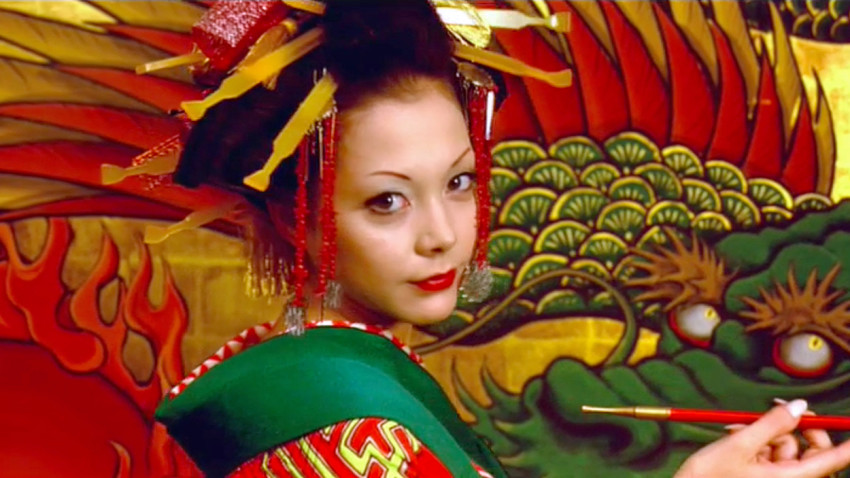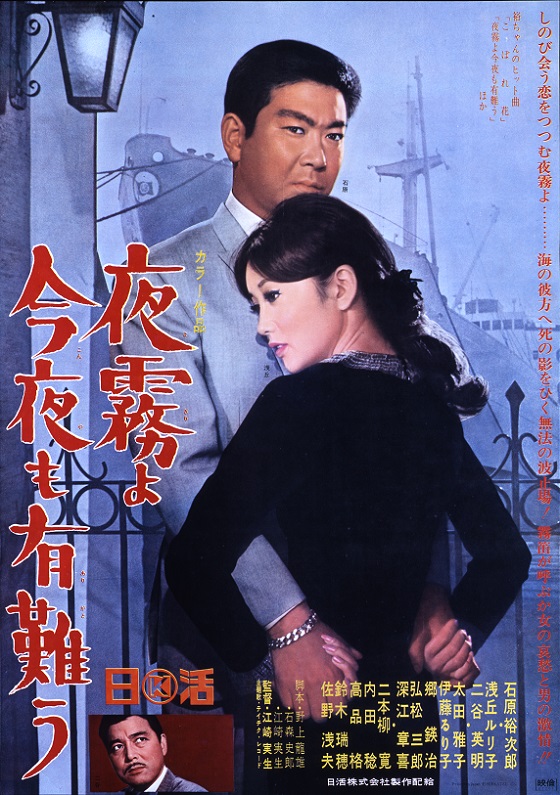Books: Japanese Cinema
May 15, 2020 · 2 comments
By Jonathan Clements.
 It’s not hard to see what Bloomsbury are up to with their Japanese Cinema Book. Assembling a who’s-who of big names in Japanese film criticism, editors Hideaki Fujiki and Alastair Phillips have come up with a chunky introduction to multiple aspects of an entire national cinema, ready not only for the Olympics bandwagon (now postponed), but to serve as an impromptu souvenir of the British Film Institute’s massive Japan initiative.
It’s not hard to see what Bloomsbury are up to with their Japanese Cinema Book. Assembling a who’s-who of big names in Japanese film criticism, editors Hideaki Fujiki and Alastair Phillips have come up with a chunky introduction to multiple aspects of an entire national cinema, ready not only for the Olympics bandwagon (now postponed), but to serve as an impromptu souvenir of the British Film Institute’s massive Japan initiative.
There are already half a dozen introductions to Japanese film out there, but I can see this one becoming the default textbook in a number of film studies classrooms, not the least because of its sheer heft. It is a regular feature of this website’s book reviews that we moan about the insane pricing of academic books, so credit where credit is due – at 640 pages for under £20 on Kindle (£25 in paper form), this has to be the bargain of the year.
Japanese cinema demands a broad application, because pinning it down takes half a ream of paper on its own. Let’s take the year 1954, for example, in which overseas cineastes enthused about Akira Kurosawa’s Seven Samurai, while awards back in Japan chose instead to garland Keisuke Kinoshita’s weepy 24 Eyes (pictured above), and Japanese audiences flocked to the first Godzilla film. To really understand “Japanese cinema,” you’d probably need to get your head around all three, and as soon as you’d managed that, you’d have to concede that the same period saw the very nature of Japanese film was under assault from the rise of television, as evinced by multiple rubber-monster attacks on the broadcast antenna, Tokyo Tower.
Aaron Gerow begins by examining what has been written about the earliest Japanese films, before Alexander Jacoby grapples with the issue of whether a film belongs to its director; Hideaki Fujiki wades in on the nature of the spectator, and Hikari Hori discusses feminist approached to Japanese films. Similar introductory chapters swiftly ground a reader not just in Japanese film studies, but in film studies in general, grappling with global issues like film festivals, film technology and censorship, with special relevance to their application in Japan.
I’d recommend most of this book to anyone, but two chapters in particular will leap out at readers of this blog. Rayna Denison writes about manga adaptations in Japanese cinema, both in terms of stand-alone films and the rise of the unstoppable “media mix”, in which nobody can ever work out what is going on, unless they have bought sixteen books, two games, an anime spin-off and the collectible “trading” cards as well. Denison warns readers off the casual vainglory that has accompanied the recapture of Japanese box office by domestic film-makers since 2006, noting that it’s not simply a case of that well-worn cliché of “manga taking the world by storm,” but also of multiple technological, demographic and industrial changes within the nature of Japanese film.
 In particular, Denison examines the distribution and exhibition histories of the movie adaptation of Moyoco Anno’s Sakuran (pictured) and the Flowers Over Boys movie adaptation. Meanwhile, Thomas Lamarre writes a chapter specifically on Japanese animation (included, somewhat controversially, in the section on “genres”… which is sure to get someone into trouble). He briskly guides the reader through the history of Japanese animation through the first half of the 20th century, pausing to jauntily salute Momotaro, Sacred Sailors, before revisiting the effects of television with Tezuka’s Astro Boy. But, honestly, I suspect that many of our readers will already know much of this. The value of The Japanese Cinema Book for most of you will be in the vast amounts of information it imparts about the world of Japanese film outside anime.
In particular, Denison examines the distribution and exhibition histories of the movie adaptation of Moyoco Anno’s Sakuran (pictured) and the Flowers Over Boys movie adaptation. Meanwhile, Thomas Lamarre writes a chapter specifically on Japanese animation (included, somewhat controversially, in the section on “genres”… which is sure to get someone into trouble). He briskly guides the reader through the history of Japanese animation through the first half of the 20th century, pausing to jauntily salute Momotaro, Sacred Sailors, before revisiting the effects of television with Tezuka’s Astro Boy. But, honestly, I suspect that many of our readers will already know much of this. The value of The Japanese Cinema Book for most of you will be in the vast amounts of information it imparts about the world of Japanese film outside anime.
Michael Raine, for example, daringly describes the moneyball-style accountancy at the Toho studio, where a pragmatic producer in 1957 suggested that they give up on “home-run” hits like samurai movies, and concentrated instead on the smaller risk and smaller returns of workplace comedies and teen musicals. Jennifer Coates similarly approaches the history of yakuza movies as an evolving genealogy of a genre, a virus that adapts with startling originality to its hits and misses, finding new niches to occupy amid ever-changing audiences and audience expectations.
 Not every chapter is a winner – as ever, there are one or two that come across like a robot has swallowed a dictionary, or that someone who knows nothing about film has wandered into a meeting and offered to knock something up as a favour. But the sheer size of this book, and the superb return on investment of the majority of its authors, makes this the sort of textbook I can see students returning frequently throughout their career.
Not every chapter is a winner – as ever, there are one or two that come across like a robot has swallowed a dictionary, or that someone who knows nothing about film has wandered into a meeting and offered to knock something up as a favour. But the sheer size of this book, and the superb return on investment of the majority of its authors, makes this the sort of textbook I can see students returning frequently throughout their career.
Ni Yan, for example, writes a ground-breaking chapter on Japanese cinema in occupied Shanghai, a topic that I find fascinating today but would have flipped right past in my younger days. Stephanie de Boer writes thrillingly about Sino-Japanese tie-ups in the Cold War world, and Ryan Cook practically made me fall off my chair in surprise with his chapter on remakes and adaptations, which included discussion of A Warm Misty Night (1967), nothing less than a Japanese remake of Casablanca (pictured)! I have been writing about Japanese film for a living for more than twenty years, but The Japanese Cinema Book left me oddly excited about the prospect of new things to explore, and open to the prospect that even those chapters that don’t appeal to me today may well do so in a little while. I dare say that there will be something in this book that will surprise you, and that if you put it on the shelf and come back to it a couple of years down the line, it will be a whole different treasure trove, because you will be a whole different person. This is a book to invest in, and a book to revisit.
Jonathan Clements is the author of Anime: A History. The Japanese Cinema Book is published by Bloomsbury.
Gilles Poitras
May 15, 2020 11:55 pm
Cool. I am going to order this. One picky detail about "geisha adventure Sakuran" Kiyoha is not a geisha, she is a high ranking prostitute. I'll have to rewatch the movie but I don't recall any geisha in it. Hell I'll have to rewatch it as it is such a good film. Thanks for a most informative review.
Jonathan Clements
May 16, 2020 3:37 am
Thanks Gilles. I did wring my hands over what to call it, and thought I would get away with "geisha". I obviously can't so I have sneaked that word out of the article. JC